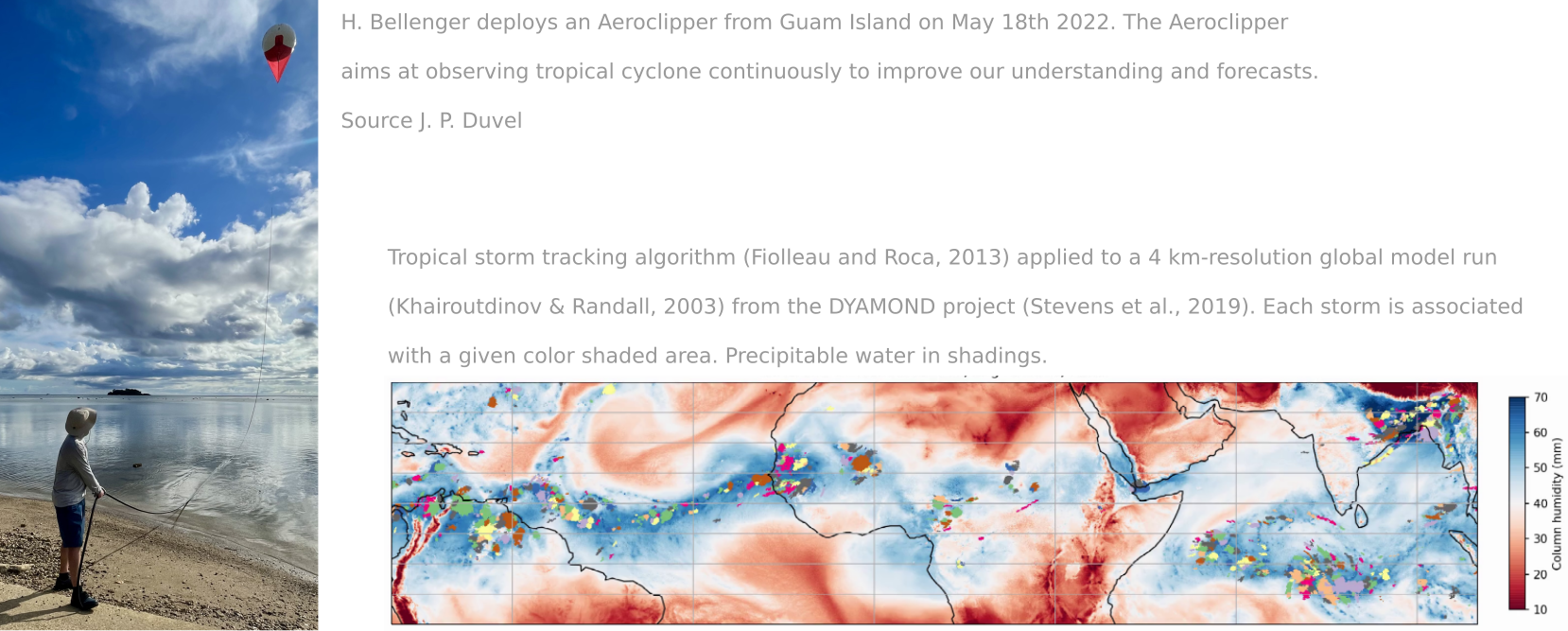Dynamics of tropical atmosphere
Tropical circulations like monsoons and tropical cyclones depend
on convection which corresponds to the movement of air masses
leading to clouds formation. We study the life cycle and spatial
organization of the convection following complementary approaches:
development of theories, development of parameterizations in
global atmospheric models but also development of instruments and
participations in field campaigns.

Development of boundary-layer balloons
The team is developing quasi-Lagrangian balloons, called
Aeroclippers, to study air-sea interactions in the tropical boundary
layer. In particular, the Aeroclipper will allow to measure key
atmospheric variables (temperature, pressure, humidity and winds) at
high frequency (1 minute) within the eye of tropical cyclones.
Several field campaigns organized in Guam Island in 2022 and 2023
have validated the concept, one of the deployed balloons having
lasted 23 days.
Identification and characterization of convective processes at small
scales (thermals, breeze, or squall lines) and their
interactions with the surface and large-scale background flow are
studied using Large Eddy Simulations (LES) and Cloud Resolving
Models (CRM) where convection is explicitly resolved. Idealized
setups of LES and CRM models are particularly useful to study the
aggregation of convection and the formation of tropical storms.
Convective precipitation associated with western African monsoon is
studied to better understand dynamical processes leading to regional
precipitation variability in western Africa. The role of the ocean,
greenhouse gas, and sulfate aerosols in such variability are more
particularly investigated. Extreme precipitation and their links
with mesoscale convective systems are more generally studied over
the whole tropical band using kilometer-scale models.
Permanent Staff
H. Bellenger, H. Chepfer, J.-P. Duvel, B. Fildier, M. Ghil, A. Giannini
PhD students, postdocs
M. Carenso, L. Parc

